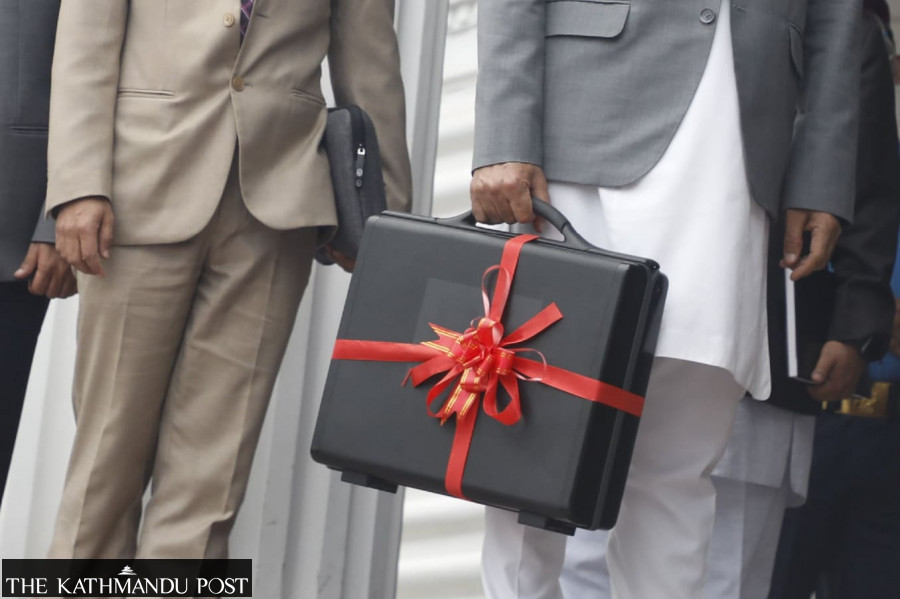Columns
Fiscal federalism update
The national budget should acknowledge provincial and local governments.
Khim Lal Devkota
The government will present the budget for Fiscal Year (FY) 2024/25 in a few days. In Nepal’s federal structure, functional responsibilities are devolved to the sub-federal levels while revenue remains centralised. The constitution aims to decentralise revenue through legislation. To achieve this, fiscal transfers to the sub-federal levels are ensured by the constitution. These fiscal transfers are done through four grants: Fiscal equalisation, conditional, special, and matching grants. Among these grants, the fiscal equalisation grant is vital; it is considered unconditional and includes full autonomy to the subnational governments.
Between FY2018/19 and FY2023/24, all seven provinces received an average annual grant of Rs112 billion, while local levels received Rs261 billion. Annually, each province received an average of Rs16 billion and local levels received around Rs350 million in grants from the Government of Nepal. Although the local levels receiving Rs350 million yearly sounds positive from the outside, the situation looks disappointing from within.
The principle of grants stipulates that the ratio of fiscal equalisation grants to the total budget or GDP should increase. However, this ratio has decreased. Consequently, the proportion of equalisation grants allocated to the sub-federal levels in the total budget was 10.27 percent in FY2018/19, declining to 8.34 percent in FY2023/24. This indicates a serious flaw in grant distribution, necessitating improvement. The situation is even more disappointing at the local level, where the percentage of equalisation grants among the four grants received was 41.38 percent in FY2018/19, with conditional grants comprising 53.74 percent. In FY2023/24, the percentage of equalisation grants decreased to 29.61 percent, while conditional grants increased to 65 percent. This highlights the disproportionate burden of conditional grants at the local level. The share of special and matching grants in the total grant is only 5 percent.
However, the government has yet to understand the definition of a special grant. Matching grants will be distributed based on the demand of sub-federal levels to fill the resource gap in certain projects and programmes. The government will distribute the special grant based on the supply side after considering factors such as poverty scenarios, among others, at the sub-federal levels. Furthermore, this grant is also used to compensate for the Fiscal Equalisation Grant. The government has not yet considered this aspect, and it should seriously review all types of grant allocations, including special and matching grants.
Grant distribution remains unfair, with no improvement in the trend of people visiting ministers and ministries for programmes and projects. From local government chiefs to federal parliamentarians, ministries are overcrowded. Many ministries allocate programme budgets at their discretion, with a significant portion favouring the constituencies of the prime minister and ministers. Subsequently, the budget is directed towards senior leaders, influential parliamentarians, secretaries, and so forth. This situation mirrors the pre-federalisation era, albeit with a slightly reduced budget being distributed haphazardly. During discussions on the ministerial budget for FY2023/24 in parliament, I raised concerns about the projects and programmes of certain ministries. The allocated program budget is even lower than that of previous village development committees.
The World Bank published a report on Monday that was consistent with the facts stated above. Specifically, the report unveiled the 'Nepal Fiscal Federalism Update 2024', which aims to assess Nepal's progress in fiscal federalism and examine the alignment between the 2015 Constitution's fiscal federalism vision and present realities.
The report reveals that fiscal balances of sub-federal levels slipped into deficit in FY2022/23 for the first time since the implementation of fiscal federalism in Nepal. Provincial governments recorded a consolidated fiscal balance deficit of 0.3 percent of GDP in FY2022/23, attributed to decreased revenue and grants, which dropped to a record low of 3.5 percent of GDP. Conversely, expenditure saw only a marginal increase to 3.8 percent of GDP. However, there was notable variation in fiscal balances among provinces, ranging from a deficit of 0.8 percent of GDP in Sudurpashchim to a surplus of 0.2 percent of GDP in Madhesh. Local governments also experienced a deficit of 0.4 percent of GDP in FY2022/23, stemming from a significant decrease in revenue and grants compared to the previous fiscal year.
The report further highlights a decline in consolidated revenue and grants of sub-federal levels to a record low in FY2022/23, mainly due to reduced intergovernmental grants and revenue sharing. Provincial governments' revenue and grants dropped to 3.5 percent of GDP, driven by a decrease in intergovernmental revenue, constituting over 90 percent of provincial revenue. Local government revenue and grants declined to 8 percent of GDP in FY2022/23. Despite the decline in fiscal transfers from the federal to local levels, provincial transfers to localities remained unchanged. Notably, property taxes and local government service fees constituted over 70 percent of local governments' own-source revenue.
Regarding expenditure, provincial government spending slightly increased to 3.8 percent of GDP, driven by elevated capital spending, particularly in infrastructure projects. Recurrent expenditure accounted for only 40 percent of total provincial expenditure. Conversely, local government spending saw a marginal decrease to 8.4 percent of GDP in FY2022/23 primarily due to reduced capital spending. A significant gap persists between sub-federal levels' expenditure and revenue, with only 8 percent of provincial spending and 6 percent of local spending financed by own revenue, leading to a marginal increase in the vertical fiscal gap in FY2022/23.
The report also notes stagnation in own-source revenue collection, indicating moderate improvement in revenue assignment policies and weaknesses in revenue administration. It emphasises the necessity of upgrading institutional arrangements to manage the fiscal transfer system effectively. It highlights the absence of a legal provision/procedure for determining the pool of funds to be transferred through fiscal transfers and recommends increasing the ratio of Fiscal Equalisation Grants within the pool of resources to strengthen sub-federal levels' planning and decision-making.
Moreover, the report suggests establishing transparent, consultative processes and technical methodologies for determining the divisible pool for fiscal transfers to enhance predictability and increase fiscal autonomy at sub-federal levels. The major challenge identified within the fiscal transfer system is the allocation of conditional grants, for which the bank proposes reducing conditional grants while enhancing fiscal equalisation, retaining conditional grants for federal responsibilities delegated to sub-federal levels, and allocating funds based on transparent criteria and procedures to align with the needs of sub-federal levels. Lastly, the report recommends determining and publishing grant amounts earlier in the fiscal year to facilitate improved planning and execution.
Coming back to the budget, most ministries at the federal level act no less than those in the Rana era, with ministers often allocating budgets solely to their constituencies. Projects are frequently sent to the sub-federal levels as conditional grants. The constitution designates the province as the key entity for development, emphasising that infrastructure development should be led by the province, not the federal ministry—a principle underscored in the constitution. Out of the 22 ministries at the federal level, we need just between eight and ten, as more than half of the ministries overstep their jurisdiction. When presenting the budget, the government should embrace the spirit of the constitution and acknowledge the existence of provincial and local governments.




 14.83°C Kathmandu
14.83°C Kathmandu















